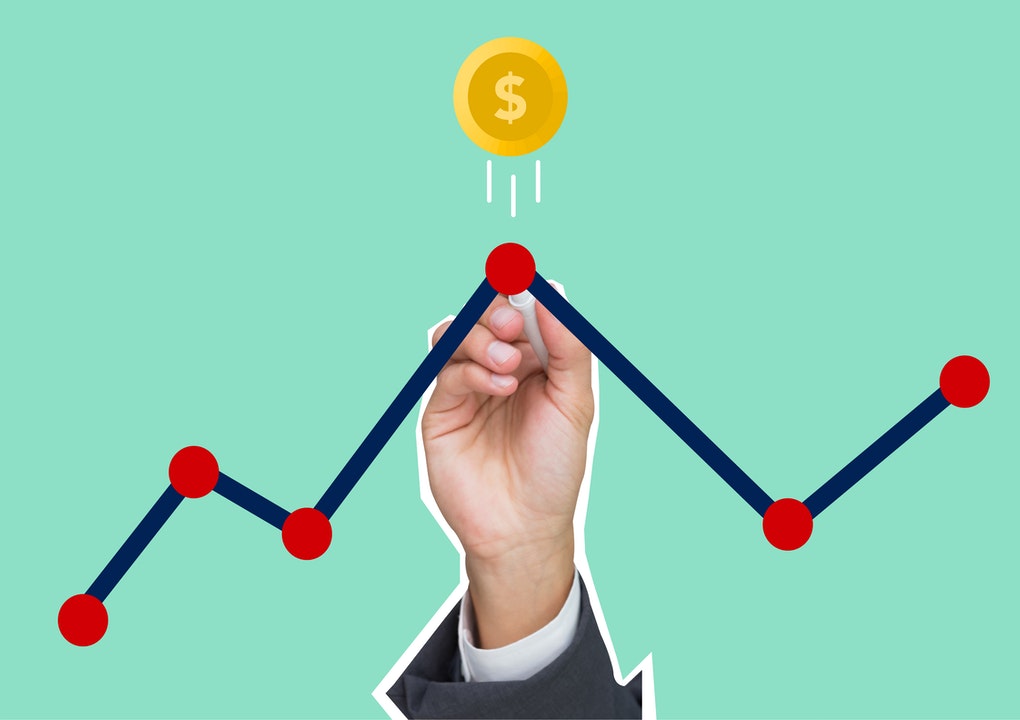Movies are a great way to free yourself of any thought. what could be better? If they thought you the actual-world knowledge. The peaks and valleys of the financial world have created fantastic films over the years. However, art may also be educational.
Despite their concentration on larger-than-life personalities and a tendency to glamourize extravagance. Many Hollywood blockbusters provide vital personal financial ideas that we can all apply in our everyday lives.
- However, some big-screen films attempt to depict how life is for financial experts and their clients.
- While these sorts of movies are very entertaining, they may not always accurately portray what it’s like to be a practitioner in finance.
- Instead, they tend to present a distorted picture of the financial industry.
We use a more realistic approach here than writers and filmmakers in documentary films.
Some may claim that Hollywood played a role in generating this unfavourable image. Citing the Harvard Business Review’s observation that media, particularly films, “are essential arbiters of public opinion. Influencing which activities, businesses, and individuals are valued and which are distrusted.” Whether the film industry contributes to or reflects the public’s mistrust of financial experts is arguable.
1. Billion Dollar Day (1986)

This BBC documentary follows three foreign currency brokers in New York, London, and Hong Kong on a typical day. On the one side, the videographers appear stunned by the dealers’ luxurious living and young age. Conversely, they make no secret that they see these traders as most gamblers.
The forex market (Forex, FX, or currency market) is a global decentralized or over-the-counter (OTC) market for currency trading. This market sets the exchange rates for all currencies.
It encompasses all purchasing, selling, and exchanging currencies at current or fixed values. It is the biggest market in the world in terms of trade volume, trailed by the credit market.
Because currencies are always decided to trade in pairs, the foreign exchange market determines a currency’s relative value by establishing the market price of one currency if purchased with another. The bigger multinational banks are the primary players in this industry. Besides weekends, financial centres worldwide serve as anchors of trade amongst a diverse spectrum of buyers and sellers around the clock.
The film depicts the traders in action, trading long and short, swiftly taking and closing enormous positions to capitalize on little price swings. These traders are acting on gut feelings about what other traders are doing rather than economic analyses.
The documentary follows three merchants in New York, London, and Hong Kong. The traders are tracked over a regular day to highlight each trader’s struggles and devotion. During a 24-hour trading session, more than a billion pounds, dollars, and German marks are traded. The documentary is a watershed moment in International Business Schools and currency exchange circles.
When you watch this documentary, which was filmed less than 30 years ago, you realize how much the actual world and financial market infrastructure have progressed.
Yet the fundamental issue of finance’s social utility remains the same. The three dealers profit more than £100,000 by trading currencies worth $1 billion. “By trading so extensively with each other, they add to the speculative froth on what has become a crazy industry,” the documentary ends. It is the monetary cost that the globe pays for a free market.”
2. Inside Job (2010)

The documentary walks the audience through the legislative changes and banking practices in the United States that led to the worldwide financial crisis. It begins by emphasizing how the economy was designed to collapse, how the bubble built between 2001 and 2007, how the problem occurred in 2008, and who was responsible for the disaster before concluding with the aftermath.
It Markets and financial services were deregulated in the 1980s, with Alan Greenspan, the powerful US Federal Reserve Board chairman from 1987 to 2006, at the helm. It is an essential documentary for financial experts. It understands the history of one of the world’s greatest economic crises. This film is as suspenseful as any thriller.
Ferguson tells a fantastic narrative with the help of some great interviewees. Marks actively sold mortgages to those who couldn’t afford them in the real estate market. These were put together in packets. They were recorded as physical assets even though they were worthless. The institutions who put them together hedged their bets by betting against them.
Profits were influencing policy as a result of the collapse of the mortgages. This process has been pursued by financial reform initiatives that many in both parties oppose. Lobbyists have convinced them. There is no moral basis for Wall Street’s current operations.
This so-called “sub-prime” market offered mouthwateringly high returns. Banks and lending institutions were freer to gamble with depositors’ money and freer to borrow more. And they were free to provide investors with bewilderingly complicated financial instruments, with income streams from various debts bundled together, including high-interest home loans made available to high-risk borrowers.
3. Floored (2009)

This documentary is also a piece of financial history; it’s about a profession rendered virtually obsolete by technology – floor trading.
Print isn’t the only business suffering from the effects of modern technologies. Computer displays and hyper-speed data are doing what Craigslist did to the gay club dance floor’s materiality of the trading floor—rendering it nearly useless in a now electronically enabled economy.
Current and past floor traders are interviewed as they cling to the stock market floor with nostalgia, love, hatred, and techno-phobia. Some traders lament the loss of physical combat, comparing virtual trading to viewing a sports game without looking away from the scoreboard. But they have all gotten frighteningly close to realizing that being machine-like has always been an intrinsic element of the job.
It depicts the competitive and in-person floor dealing at the Chicago Mercantile Exchange. The culture has a lot of unexpected oddities. Floor merchants formed cliques depending on where they resided in the city, their nationality, or even their religion.
Most financial markets’ impersonal and secretive electronic trading is the polar antithesis of royal-rumble-style pit trading. Some individuals who had great results in the pit suffer from electronic trading.
The film explores the transition from open-outcry floor trading to electronic trading and its impact on the lives of Chicago floor traders. While the video is on floor trading in Chicago, some of its principles may be safely applied to markets worldwide that underwent a similar transformation.
3. The Ascent of Money (2008)

Finance experts who want to learn about the world’s whole financial history should include The Ascent of Money on their list of films to watch. Historian Niall Ferguson takes viewers on a journey through the financial world, beginning with the ancient city of Babylon and ending with the 2008 global financial crisis.
We’ve all heard stories about ‘greedy bankers,’ who prey on the poor and unlucky. They allegedly take advantage of others’ shortcomings and lack of financial expertise to drain riches from the bottom of society and stockpile it at the top.
However, the financial system is the best means for nations, communities, and people to escape poverty and develop financially. Banks, for instance, allow savers to deposit funds later lent to needy people.
The money is made available to others by depositing it in a bank. If the funds were not deposited in a bank, they would sit idle until their owner spent them.
There is no such thing as a flawless financial system. This is because the people who govern and invest in it are humans, and humans are illogical by nature.
Humans are prone to mood swings ranging from optimism and joy to pessimism and sorrow. Money tends to exaggerate these emotional fluctuations, making us even more unreasonable.
- Humans are naturally more at ease among crowds. Before making our judgments, we like to observe what others do, noting their achievements and mistakes.
- Human cultures are also inherently unequal. We all have distinct talents and features that others evaluate based on their perceived relevance. Everyone is not valued equally in society.
The film explores the transition from open-outcry floor trading to electronic trading and its impact on the lives of Chicago floor traders. Most financial markets’ impersonal and anonymous electronic trading is the polar antithesis of royal-rumble-style pit trading. Some individuals who had great success in the pit struggle with electronic trading. While the video is on floor trading in Chicago, some principles apply to markets worldwide.
5. Freakonomics: The Motion Picture (2010)

Levitt, a “rogue economist,” “explores the hidden side of everything” in Freakonomics. This entails applying an economist’s perspective to sensitive issues such as cheating, crime, and racial differences. Despite this, the collection feels too weak in-depth and too content with broad strokes.
The total of Freakonomics is less than the sum of its parts. Each component is interesting, instructive, and compelling on its own. When these chapters are combined, it’s difficult to see why they were picked for adaptation for any reason other than the filmmaker’s inclination.
While Freakonomics isn’t precisely a film about the financial business, it presents many intriguing hypotheses about why individuals behave the way they do. The documentary demonstrates causality and association between seemingly random data pieces may be established.
The book by Levitt and Dubner revealed the deeper societal realities hidden underneath free-floating statistics. On the other hand, the cinematic version only demonstrates that a collection of bite-sized featurettes does not always equal a whole dinner.




 Our users have reported an average of $5K+ positive impact on their personal finances
Our users have reported an average of $5K+ positive impact on their personal finances
